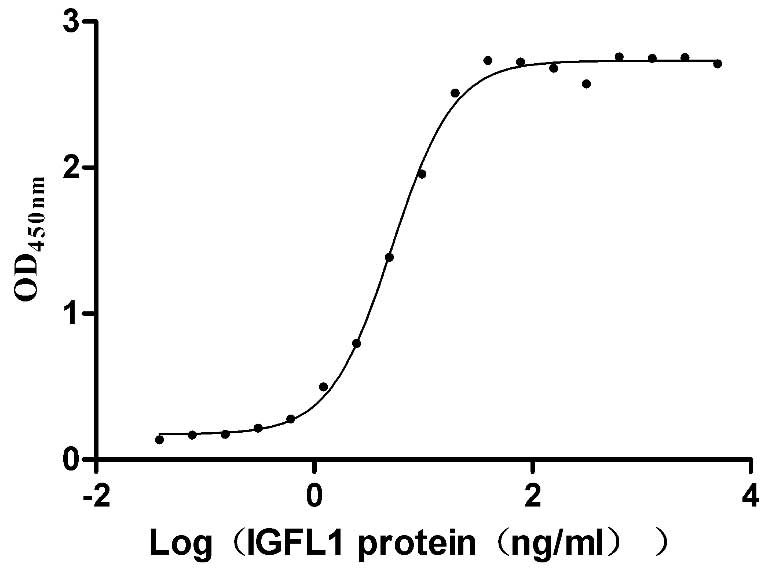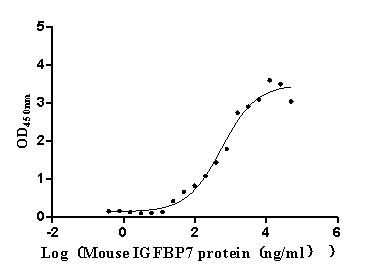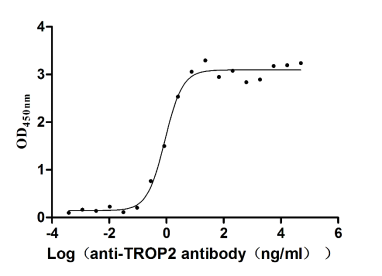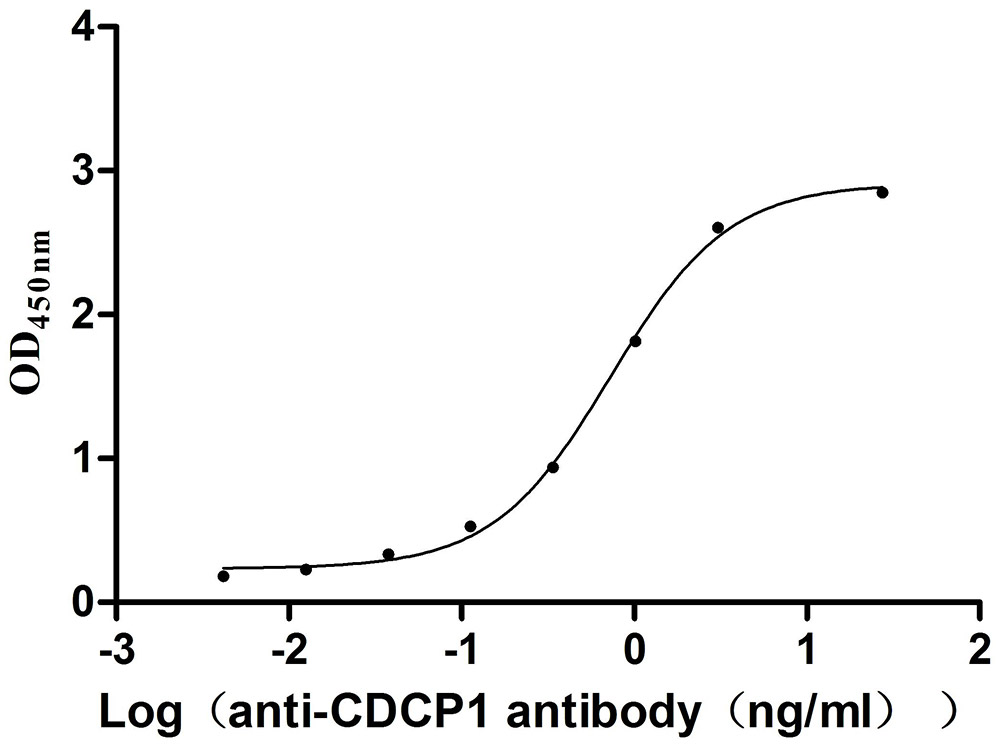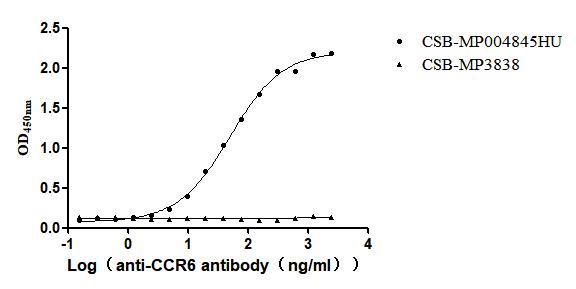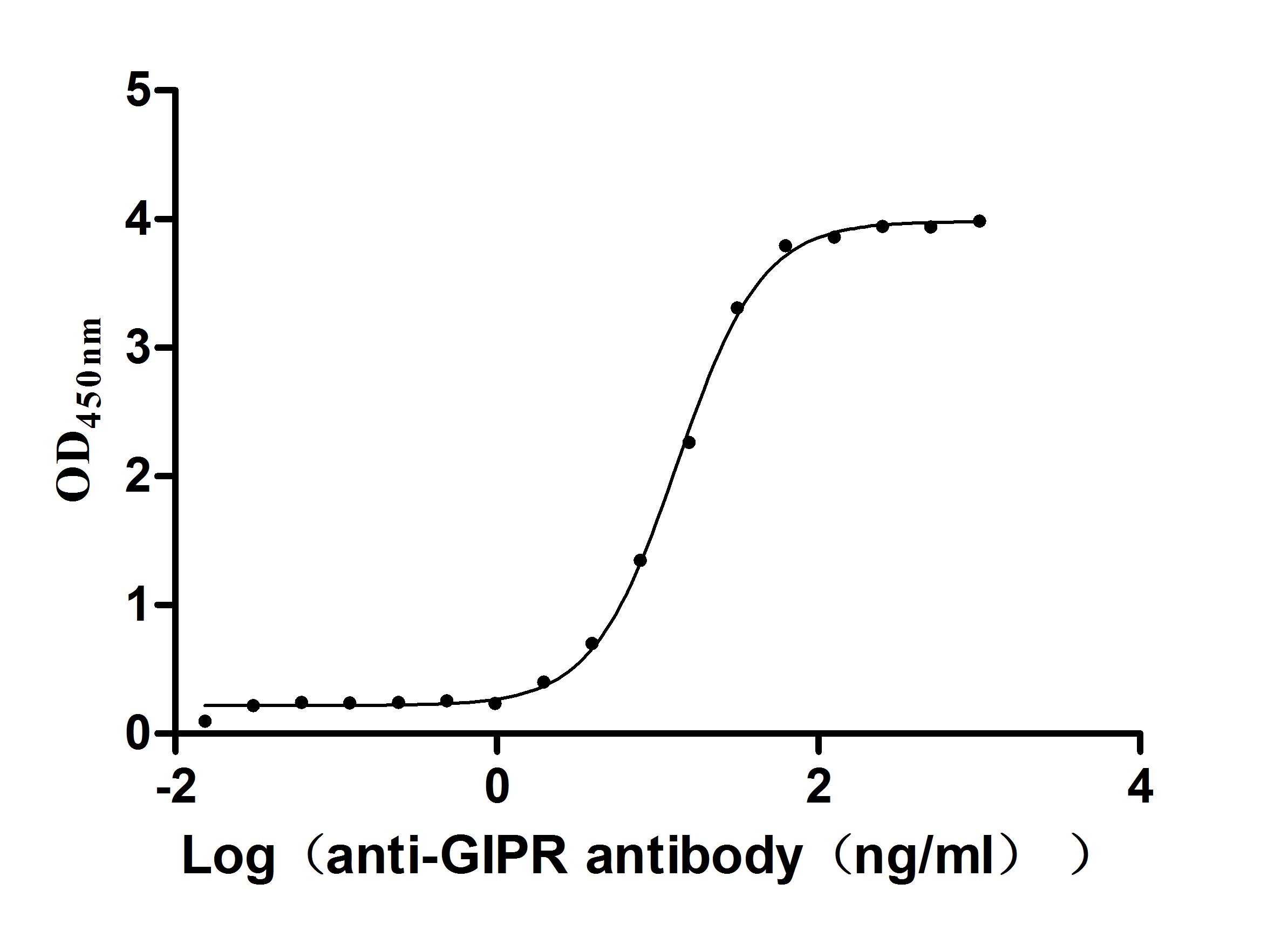Recombinant Saccharomyces cerevisiae DNA base excision repair N-glycosylase 2 (NTG2)
-
中文名稱:釀酒酵母NTG2重組蛋白
-
貨號:CSB-EP600469SVG-B
-
說明書:
-
規格:
-
來源:E.coli
-
共軛:Avi-tag Biotinylated
E. coli biotin ligase (BirA) is highly specific in covalently attaching biotin to the 15 amino acid AviTag peptide. This recombinant protein was biotinylated in vivo by AviTag-BirA technology, which method is BriA catalyzes amide linkage between the biotin and the specific lysine of the AviTag.
-
其他:
產品詳情
-
純度:>85% (SDS-PAGE)
-
基因名:NTG2
-
Uniprot No.:
-
別名:NTG2; SCR2; YOL043C; Endonuclease III homolog 2; EC 3.2.2.-; EC 4.2.99.18; Bifunctional DNA N-glycosylase/DNA-(apurinic or apyrimidinic site) lyase 2; DNA glycosylase/AP lyase 2; Endonuclease III-like glycosylase 2; Redoxyendonuclease 2
-
種屬:Saccharomyces cerevisiae (strain ATCC 204508 / S288c) (Baker's yeast)
-
蛋白長度:full length protein
-
表達區域:1-380
-
氨基酸序列MREESRSRKR KHIPVDIEEV EVRSKYFKKN ERTVELVKEN KINKDLQNYG GVNIDWIKAL KPIEYFEWIE SRTCDDPRTW GRPITKEEMI NDSGAKVPES FLPIYNRVRL MRSKVKTPVD AMGCSMIPVL VSNKCGIPSE KVDPKNFRLQ FLIGTMLSAQ TRDERMAQAA LNITEYCLNT LKIAEGITLD GLLKIDEPVL ANLIRCVSFY TRKANFIKRT AQLLVDNFDS DIPYDIEGIL SLPGVGPKMG YLTLQKGWGL IAGICVDVHV HRLCKMWNWV DPIKCKTAEH TRKELQVWLP HSLWYEINTV LVGFGQLICM ARGKRCDLCL ANDVCNARNE KLIESSKFHQ LEDKEDIEKV YSHWLDTVTN GITTERHKKK
-
蛋白標簽:Tag?type?will?be?determined?during?the?manufacturing?process.
The tag type will be determined during production process. If you have specified tag type, please tell us and we will develop the specified tag preferentially. -
產品提供形式:Lyophilized powder
Note: We will preferentially ship the format that we have in stock, however, if you have any special requirement for the format, please remark your requirement when placing the order, we will prepare according to your demand. -
復溶:We recommend that this vial be briefly centrifuged prior to opening to bring the contents to the bottom. Please reconstitute protein in deionized sterile water to a concentration of 0.1-1.0 mg/mL.We recommend to add 5-50% of glycerol (final concentration) and aliquot for long-term storage at -20℃/-80℃. Our default final concentration of glycerol is 50%. Customers could use it as reference.
-
儲存條件:Store at -20°C/-80°C upon receipt, aliquoting is necessary for mutiple use. Avoid repeated freeze-thaw cycles.
-
保質期:The shelf life is related to many factors, storage state, buffer ingredients, storage temperature and the stability of the protein itself.
Generally, the shelf life of liquid form is 6 months at -20°C/-80°C. The shelf life of lyophilized form is 12 months at -20°C/-80°C. -
貨期:Delivery time may differ from different purchasing way or location, please kindly consult your local distributors for specific delivery time.Note: All of our proteins are default shipped with normal blue ice packs, if you request to ship with dry ice, please communicate with us in advance and extra fees will be charged.
-
注意事項:Repeated freezing and thawing is not recommended. Store working aliquots at 4°C for up to one week.
-
Datasheet :Please contact us to get it.
靶點詳情
-
功能:Bifunctional DNA N-glycosylase with associated apurinic/apyrimidinic (AP) lyase function that catalyzes the first step in base excision repair (BER), the primary repair pathway for the repair of oxidative DNA damage. The DNA N-glycosylase activity releases the damaged DNA base from DNA by cleaving the N-glycosidic bond, leaving an AP site. The AP-lyase activity cleaves the phosphodiester bond 3' to the AP site by a beta-elimination. Primarily recognizes and repairs oxidative base damage of pyrimidines, but also purine-derived lesions, alkylation damage as well as abasic sites. Can also repair the oxidation products of 8-oxoguanine.
-
基因功能參考文獻:
- The roles of OGG1 and NTG2 genes in the repair of lethal and mutagenic oxidative lesions induced by H2O2 and their relationships with iron and copper ions are discussed. PMID: 15449310
-
亞細胞定位:Nucleus. Note=Exclusively nuclear and not responsive to changes in either nuclear or mitochondrial oxidative stress.
-
蛋白家族:Nth/MutY family
-
數據庫鏈接:
KEGG: sce:YOL043C
STRING: 4932.YOL043C
Most popular with customers
-
Recombinant Human IGF-like family receptor 1 (IGFLR1), partial (Active)
Express system: Mammalian cell
Species: Homo sapiens (Human)
-
Recombinant Human IGF-like family receptor 1 (IGFLR1), partial (Active)
Express system: Mammalian cell
Species: Homo sapiens (Human)
-
Recombinant Mouse Complement component C1q receptor (Cd93), partial (Active)
Express system: Mammalian cell
Species: Mus musculus (Mouse)
-
Recombinant Human Tumor-associated calcium signal transducer 2 (TACSTD2), partial (Active)
Express system: Mammalian cell
Species: Homo sapiens (Human)
-
Recombinant Mouse CUB domain-containing protein 1 (Cdcp1), partial (Active)
Express system: Mammalian cell
Species: Mus musculus (Mouse)
-
Recombinant Human CD70 antigen (CD70), partial (Active)
Express system: Mammalian cell
Species: Homo sapiens (Human)
-
Recombinant Human C-C chemokine receptor type 6(CCR6)-VLPs (Active)
Express system: Mammalian cell
Species: Homo sapiens (Human)
-
Recombinant Macaca fascicularis Gastric inhibitory polypeptide receptor (GIPR), partial (Active)
Express system: yeast
Species: Macaca fascicularis (Crab-eating macaque) (Cynomolgus monkey)


